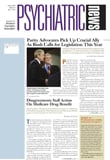The Bush administration has changed its mind about doing away with a five-year-old federal rule that requires pharmaceutical companies to prove that their products are safe to prescribe for children.
In March the Food and Drug Administration (FDA) suspended the rule that required companies to conduct safety tests in pediatric populations of new drugs for which they wanted marketing approval. The rule also required such tests on existing drugs for which the companies want the FDA to approve a new indication, such as when the maker of an antidepressant wants approval to market it for anxiety as well, and for drugs that had been approved for adult use but the company would like to market for use with children. In addition, it mandated pediatric testing in cases in which a company wants to introduce a new dosage form or dosing regimen.
The FDA established the pediatric-testing requirement in 1998 as part of the rule-making process that accompanied the passage of a 1997 law known as the Food and Drug Administration Modernization Act (FDAMA). When Congress passed that legislation, a major goal was to remedy a severe dearth of scientific data showing that prescription drugs were safe to administer to children. Based only on anecdotal evidence of efficacy, however, many physicians were prescribing medications for youngsters even though they had never been tested in that age group.
Since children have dosing considerations and side-effect risks that differ from those for adults, lawmakers were concerned that taking medications for which only adult data were available could harm children.
Since the FDAMA and the pediatric-testing rule did not cover the vast number of already available drugs for which no manufacturer-requested marketing changes were pending, the FDA added a provision for “pediatric exclusivity.” This voluntary rule allows pharmaceutical companies to obtain an additional six months of patent protection for an existing medication if they agree to conduct safety and efficacy tests in children. The FDA developed a priority list for such drug testing that includes 25 psychoactive medications among the 450 products on the list (Psychiatric News, January 19, 2001). This patent-extension provision was not included in the pediatric rule that the Bush administration negated and then reinstated.
The FDAMA expired at the end of 2001, and Congress voted to extend it—but with a new and rather enigmatic name: Best Pharmaceuticals for Children Act of 2002. President George W. Bush signed it into law on January 4.
The new law contains the same pediatric-testing requirements as its predecessor, but in March the FDA, encouraged by the White House, suspended the rule after the Competitive Enterprise Institute and two other groups filed suit to challenge the FDA’s legal right to enact the pediatric testing mandate. The institute describes itself as a nonprofit organization “dedicated to the principles of free enterprise and limited government.”
The decision to suspend the pediatric rule was immediately followed by a torrent of protests from advocacy groups, physicians, and others who charged that the administration was putting children’s health at risk by caving in to the arguments made by big business that the rule imposed too large and expensive a burden on them.
Many proponents of the pediatric-testing requirement are urging Congress to protect its future by codifying it as a law instead of leaving it to the federal regulatory process.
Apparently swayed by the volume and passion of the protests against the suspension of the rule, Health and Human Services Secretary Tommy Thompson announced on April 19 that the administration would continue to keep the original testing mandate in effect.
He said in his announcement, “Children need access to the same kinds of safe, effective treatments that are available to their parents, and that means conducting appropriate clinical trials.”
David Fassler, M.D., chair of the APA Council on Children, Adolescents, and Their Families, described the Bush administration’s reversal as a positive move. “When it comes to medication,” he said, “we are well aware that children are not just little adults. We need to do everything we can to promote and encourage expanded research in this area.”
He pointed out that both APA and the American Academy of Child and Adolescent Psychiatry “worked collaboratively with numerous child-advocacy organizations to encourage the FDA to retain this important regulation.” ▪
